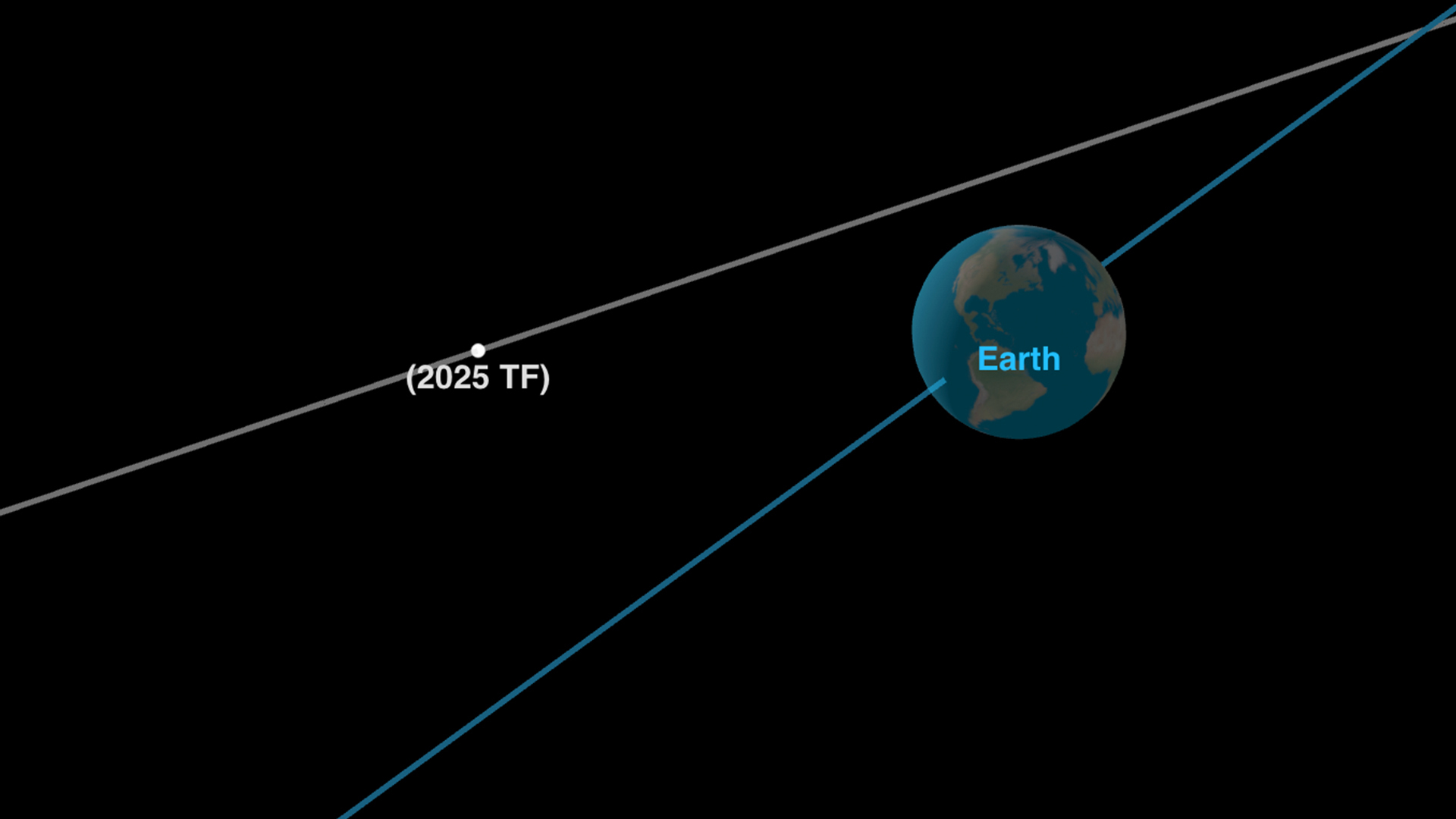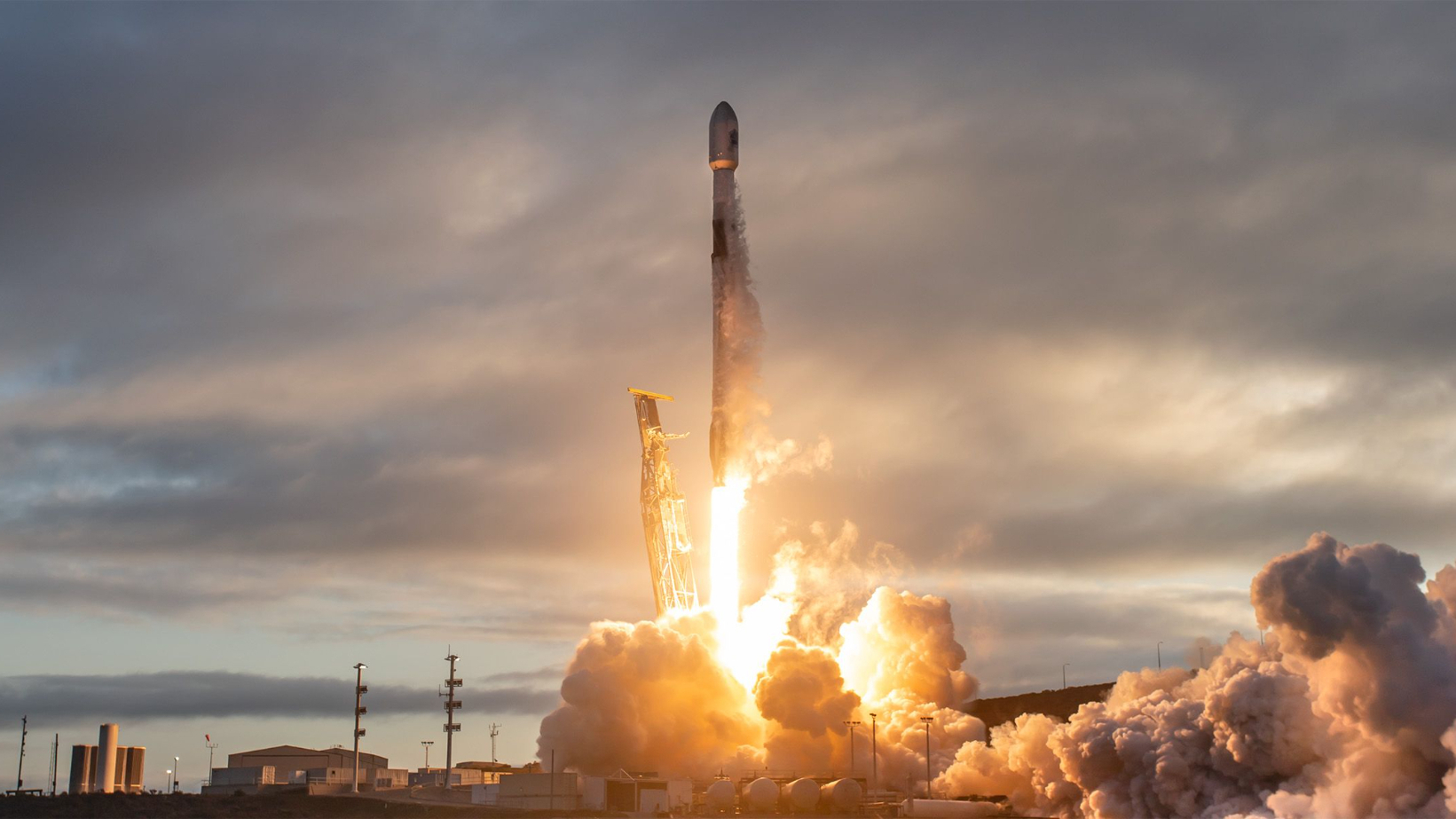Surprise asteroid flies by Earth at only 250 miles away (video)
It's a close flyby of our planet, but not a record.
A small asteroid just gave the Earth a close buzz.
The little space rock, called 2025 TF, safely passed within roughly 250 miles (400 km) of our planet on Tuesday (Sept. 30) at 8:49 p.m. EDT (Wednesday, Oct. 1 at 0049 GMT), according to NASA data. That flyby puts the asteroid at the same approximate altitude as the International Space Station.
While that's a close shave, it's actually not a record. Five years ago, asteroid 2020 VT4 flew by us at about 230 miles (370 km) in altitude. Back then, the European Space Agency said telescopes only picked out the record-breaking 2020 visitor after that asteroid had safely whizzed by.

The new asteroid, 2025 TF, is small by space standards. It is about the size of a couch, with an estimated diameter of between three and nine feet (1.2 and 2.7 meters). According to The Watchers, astronomers found this new asteroid a few hours after its closest approach, but NASA — due to the impacts of a government-wide shutdown — has not issued a statement confirming this.
Several space observatories did watch the asteroid, according to an Oct. 2 update from the Minor Planet Center, which shares information quickly with the astronomy community through an electronic circular. The observations list suggests the Catalina Sky Survey was the first to detect 2025 TF, slightly past its closest approach, at 2:35 a.m. EDT (0635 GMT) on Oct. 1.
Given the NASA government shutdown, Space.com could not obtain comment from the agency about the circular. That said, data from the Center for Near-Earth Object Studies (CNEOS) at NASA's Jet Propulsion Laboratory show a nominal or “most likely” distance of the asteroid's flyby was 4,213 miles (6,780 km) from the center of the Earth.
A close-approach viewer of 2025 TF in CNEOS suggests the asteroid flew over Antarctica. Measured through the poles, the Earth's radius is 3,950 miles (6,357 km) — meaning the flyby was roughly 262 miles (423 km) above our planet. That said, there are many uncertainties with the calculation given Earth's size, and flyby measurement techniques.
Breaking space news, the latest updates on rocket launches, skywatching events and more!
As a matter of course, NASA keeps an eye on the sky for extremely large asteroids that could pose a threat to our planet. While a few have been tagged "potentially hazardous” due to their orbits and their size, there are no imminent, large threats to our planet found after decades of searching.
Smaller space rocks like 2025 TF are harder to spot, in part because the network of telescopes is optimized to catch larger and more threatening objects. NASA and its partners, however, continue to catalog objects. Scientists have also said the technology is improving—so much so that astronomers often spot safe, close passes like this one several times a week.

Elizabeth Howell (she/her), Ph.D., was a staff writer in the spaceflight channel between 2022 and 2024 specializing in Canadian space news. She was contributing writer for Space.com for 10 years from 2012 to 2024. Elizabeth's reporting includes multiple exclusives with the White House, leading world coverage about a lost-and-found space tomato on the International Space Station, witnessing five human spaceflight launches on two continents, flying parabolic, working inside a spacesuit, and participating in a simulated Mars mission. Her latest book, "Why Am I Taller?" (ECW Press, 2022) is co-written with astronaut Dave Williams.
You must confirm your public display name before commenting
Please logout and then login again, you will then be prompted to enter your display name.
